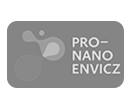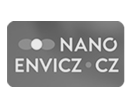Nanostructures for energy and chemical production.
Grant Agency
European Commission
Topics
Molecular Electrocatalysis.
Solid State Electrocatalysis.
Year from
2004
Year to
2007
The aim of this project is to develop advanced nanostructured materials and components for a new science-based production technology for the co-generation of chemicals and energy in a polymer electrolyte fuel cell reactor. It is expected that a significant increase in added value to chemical streams from the petrochemical industry will be achieved by harnessing the Gibbs free energy of electrosynthetic oxygen insertion reactions to low molecular weight alkenes. The project will utilise new nanoscale electrocatalytic materials for the simultaneous syntheses of chemicals and for energy production. Two examples are chosen for this application, oxygen reduction to yield hydrogen peroxide and epoxidation. The understanding of the mechanism of the first reaction is quite advanced, whereas that of the second has not yet been addressed.
The research will establish links between surface structure and reactivity using recent advances in computational techniques for predicting the course of reactions at the surface of nanosized clusters. For this application, the electronic properties and reactivity of nanoparticles to be used as electrocatalysists will be investigated. The partnership includes a manufacturer of fuel cell reactor components, Johnson Matthey, since the long-term industrial application of this research lies in a new use of fuel cell reactors. This concept that has not been developed so far due to the lack of a basic understanding of the mechanism of many reactions where it could be employed. Thus, this project can open up the possibility of a new approach to industrial production of chemicals the synthesis of which involves changes in oxidation state. This aim, if achieved, will represent a major step change in the utilisation of an inherently clean technology. Importantly, new ideas for developing new anionic membranes and mesoscopic ion-exchangers will be explored. This will be an important activity in this project.
The research will establish links between surface structure and reactivity using recent advances in computational techniques for predicting the course of reactions at the surface of nanosized clusters. For this application, the electronic properties and reactivity of nanoparticles to be used as electrocatalysists will be investigated. The partnership includes a manufacturer of fuel cell reactor components, Johnson Matthey, since the long-term industrial application of this research lies in a new use of fuel cell reactors. This concept that has not been developed so far due to the lack of a basic understanding of the mechanism of many reactions where it could be employed. Thus, this project can open up the possibility of a new approach to industrial production of chemicals the synthesis of which involves changes in oxidation state. This aim, if achieved, will represent a major step change in the utilisation of an inherently clean technology. Importantly, new ideas for developing new anionic membranes and mesoscopic ion-exchangers will be explored. This will be an important activity in this project.
prof. RNDr. Samec Zdeněk DrSc.
E-mail
zdenek.samec
 jh-inst.cas.cz
jh-inst.cas.cz
 jh-inst.cas.cz
jh-inst.cas.czRoom
409
Department
Extension
+420 26605 2017
Publications


















